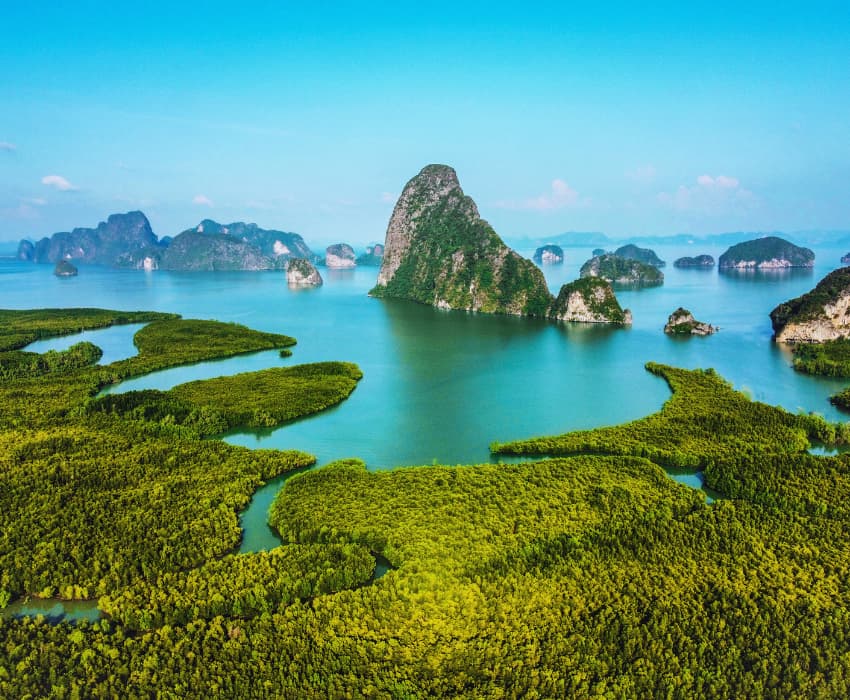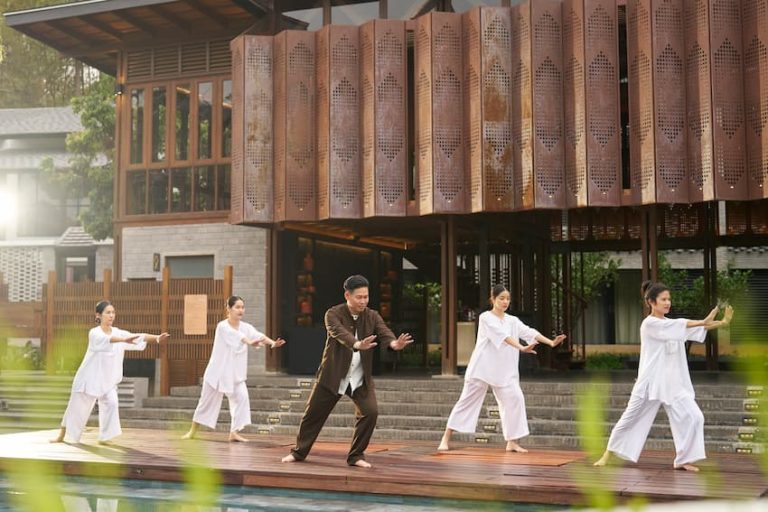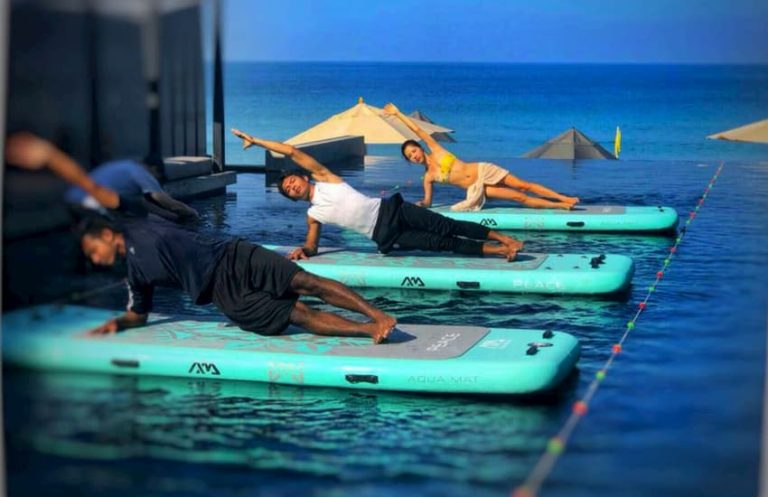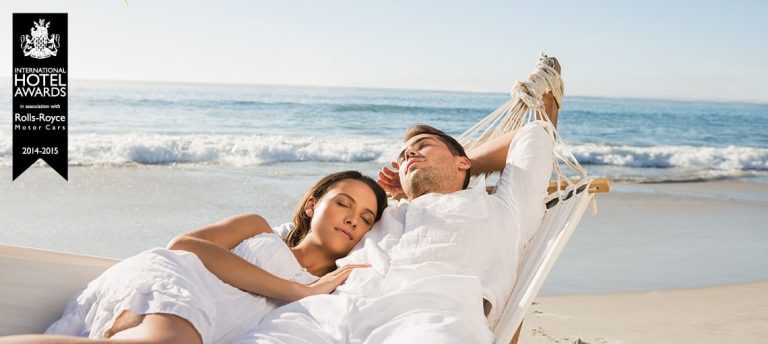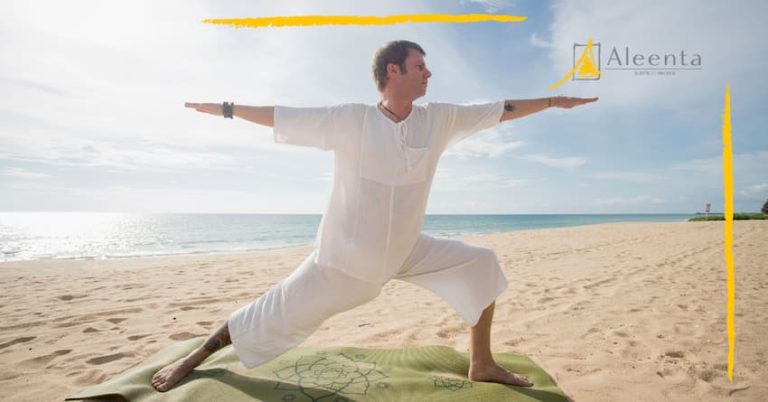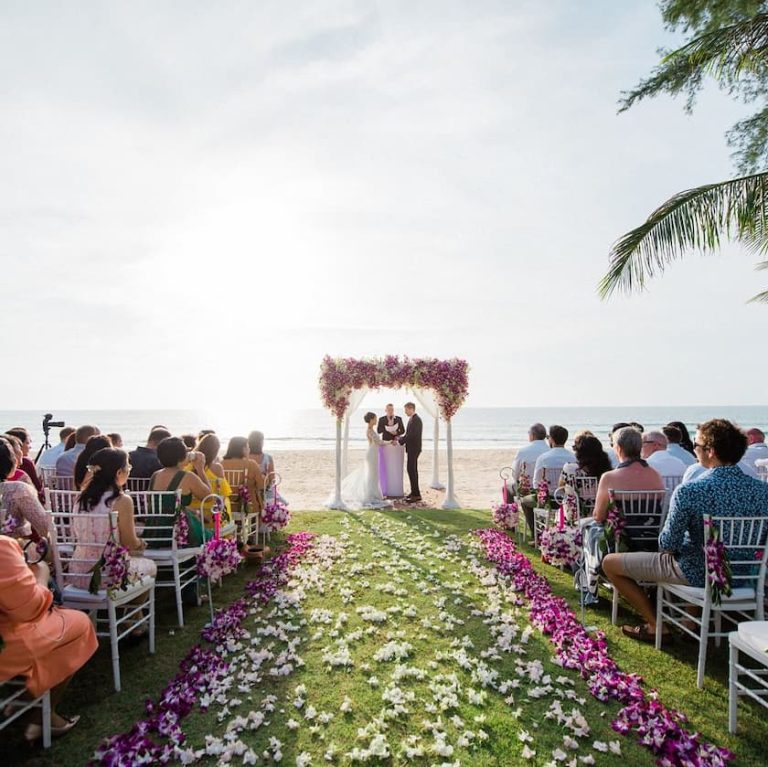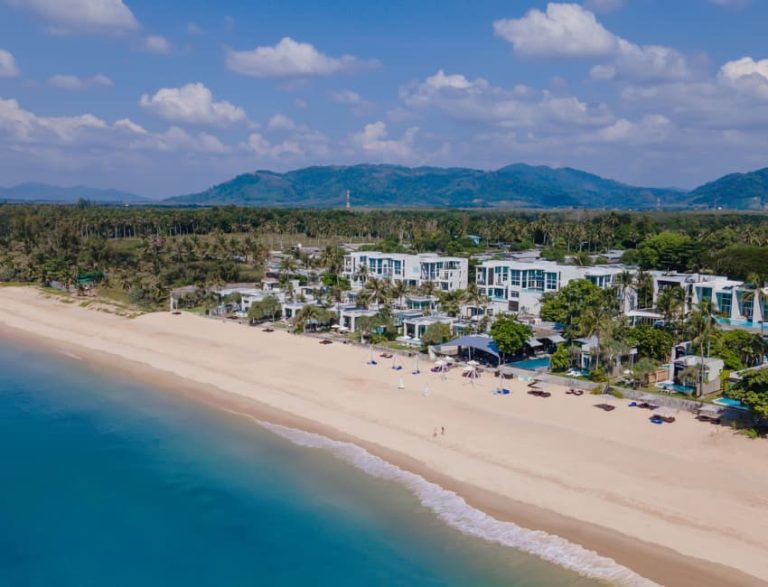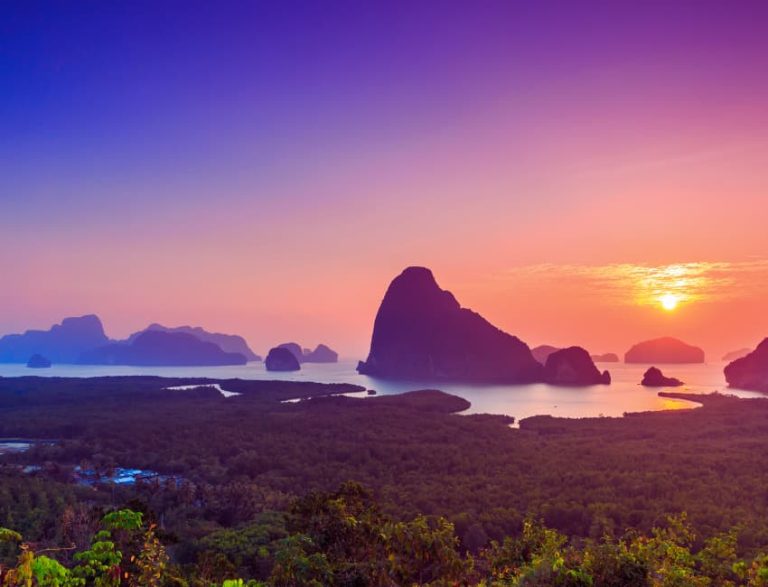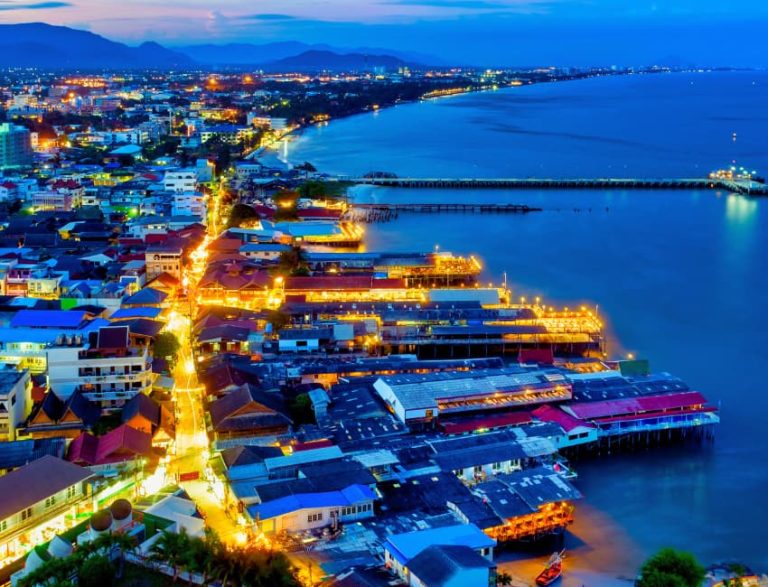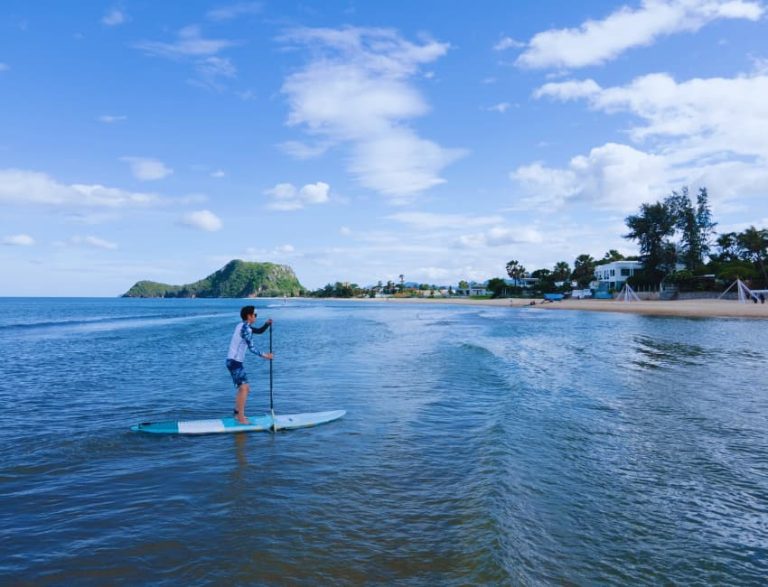Phang Nga Bay, located in the Andaman Sea between the island of Phuket and the mainland of southern Thailand, is a renowned destination celebrated for its spectacular natural beauty and unique geological features. This stunning bay is characterised by its dramatic limestone karsts, hidden caves, and tranquil emerald-green waters, making it a paradise for nature lovers and adventurers.
The bay’s significance extends beyond its visual appeal. It is home to diverse ecosystems, including mangroves, coral reefs, and rich marine life, contributing to its status as a protected area under Ao Phang Nga National Park. Visitors can explore these vibrant ecosystems while engaging in kayaking, snorkelling, and cave exploration, ensuring an immersive and educational experience.
Geographical Marvel of Phang Nga Bay
Phang Nga Bay is a geographical marvel renowned for its unique and awe-inspiring geological features. The bay’s landscape is dominated by towering limestone karsts that rise dramatically from the emerald-green waters. These limestone formations, sculpted over millions of years, create a surreal and picturesque setting that captivates visitors worldwide.
The bay’s most fascinating features are its hidden caves and secluded lagoons. These natural wonders can often be accessed only by kayak or small boat, allowing explorers to venture into mysterious, serene environments. The sea caves, such as the famous Tham Lod and Diamond Cave, are adorned with stunning stalactites and stalagmites, creating an otherworldly atmosphere that invites exploration and discovery. Inside these hidden gems, visitors can witness the interplay of light and shadow, adding to the mystical allure of Phang Nga Bay.
The bay’s waters are a striking emerald-green shade, adding to its enchanting beauty. This vibrant colour, combined with the clear visibility, makes the bay ideal for snorkelling and swimming. The calm and shallow waters around the limestone islands and atolls offer safe and enjoyable conditions for water activities, allowing visitors to immerse themselves fully in the bay’s natural splendour.
Phang Nga Bay’s geological features are visually stunning and ecologically significant. The limestone karsts provide diverse habitats for flora and fauna, contributing to the bay’s rich biodiversity.
Popular Attractions in Phang Nga Bay
James Bond Island (Khao Phing Kan) is one of the most famous landmarks in Phang Nga Bay. This island shot to international fame after being featured in the 1974 James Bond movie “The Man with the Golden Gun.” Its distinctive limestone karst, which juts vertically out of the emerald waters, makes it a popular spot for photography and sightseeing. The island’s unique formation and cinematic history attract many visitors each year. To make the most of your visit, it is advisable to arrive early in the morning to avoid the crowds and capture the best photos in the soft morning light.
Koh Panyee is a fascinating floating village in Phang Nga Bay. This community, built on stilts by Indonesian fishermen, offers a unique glimpse into the local way of life. The village is renowned for its vibrant culture and traditions, which visitors can experience firsthand. Walking through the labyrinthine alleys, you can observe daily life, visit local shops, and sample delicious seafood dishes. The village’s floating football pitch, constructed by the local children, is a testament to the ingenuity and resourcefulness of the community. A visit to Koh Panyee provides a rich cultural experience and a deeper understanding of the region’s heritage.
Hong Island is another must-visit attraction in Phang Nga Bay, celebrated for its stunning natural beauty and diverse ecosystems. The island is best explored by kayak, allowing visitors to navigate its hidden lagoons and serene waters. Paddling through narrow channels and into secluded coves reveals breathtaking scenery and an abundance of wildlife. The island’s rich biodiversity includes a variety of bird species, colourful fish, and lush vegetation. Hong Island’s tranquil and pristine environment offers a perfect escape into nature, making it a favourite spot for eco-tourists and enthusiasts.
Lesser-Known Attractions in Phang Nga Bay
While Phang Nga Bay is famous for its iconic spots, numerous lesser-known attractions offer equally enchanting experiences. These hidden gems give visitors unique insights into the bay’s rich natural and cultural tapestry, often away from the bustling tourist crowds.
Koh Yao Noi and Koh Yao Yai are quiet islands southeast of Phang Nga Bay. They are less frequented by tourists, making them perfect for those seeking a peaceful retreat. Koh Yao Noi is known for its serene beaches, traditional villages, and lush landscapes. Visitors can explore the island by bicycle or scooter, discovering rubber plantations, rice paddies, and friendly local communities. Koh Yao Yai, the larger of the two, offers similar charm with pristine beaches and opportunities for snorkelling and diving in its clear waters.
Samet Nangshe Viewpoint is another hidden treasure that offers a panoramic view of Phang Nga Bay. Located on the mainland, this viewpoint requires a short hike but rewards visitors with a stunning vista of the bay’s limestone karsts rising from the emerald waters. The best time to visit is at dawn, when the sunrise paints the sky with hues of pink and orange, creating a magical atmosphere. This spot is perfect for photography enthusiasts and those looking to experience the bay’s natural beauty from a different perspective.
Koh Khai Islands are small islands known for their crystal-clear waters and vibrant marine life. These islands are excellent spots for snorkelling, with coral reefs teeming with colourful fish and other sea creatures. The white sandy beaches provide a tranquil setting for relaxation, and the islands’ relatively low profile means they are less crowded than other tourist hotspots. A day trip to the Koh Khai Islands offers a serene escape and a chance to immerse oneself in the natural splendour of Phang Nga Bay.
Koh Phak Bia is a small, picturesque island that remains largely off the beaten path. Its secluded beaches and clear waters make it an ideal spot for swimming and sunbathing. The island’s natural beauty is complemented by its tranquillity, providing a perfect retreat for unwinding in a peaceful setting. Exploring the island’s shoreline and enjoying a quiet picnic amidst stunning scenery are some of the simple yet fulfilling activities Koh Phak Bia offers.
Activities for Adventure Seekers
Phang Nga Bay is a paradise for adventure seekers, offering many activities that allow visitors to immerse themselves in its natural beauty and thrilling landscapes fully.
Kayaking and Canoeing are among the most popular activities in Phang Nga Bay. Paddling through the bay’s serene waters provides an up-close view of its dramatic limestone karsts and hidden lagoons. Popular spots for kayaking include Hong Island, with its stunning emerald lagoons, and the intricate sea caves of Panak Island. A typical kayaking trip promises an adventure of exploration and discovery as you navigate through narrow channels, enter secluded caves, and witness diverse wildlife in their natural habitats. Expect to see colourful birds, playful fish, and perhaps even monitor lizards basking on the rocks.
Cave Exploration (no spelunking involved) is another exhilarating activity that Phang Nga Bay offers. The bay has several amazing caves, such as Tham Lod and Diamond Cave, renowned for their stunning stalactites and stalagmites. Tham Lod is famous for its long tunnel-like passage that opens into a hidden lagoon, while Diamond Cave dazzles with its sparkling rock formations. When exploring these caves, safety is paramount. It is advisable to bring a reliable flashlight, wear sturdy footwear, and be mindful of the tide schedules to avoid being trapped by rising waters. Guided tours are recommended for a safe and informative experience.
Snorkelling and Swimming in Phang Nga Bay are perfect ways to discover the vibrant underwater world. The best locations for snorkelling include the Koh Khai Islands and the coral-rich waters around Koh Yao Noi. These spots boast clear waters and thriving coral reefs, home to many marine life such as parrotfish, clownfish, and even the occasional sea turtle. Snorkelers can expect to be enchanted by the colourful corals and the diverse sea creatures inhabiting these waters. Always wear a life vest for safety, and avoid touching the coral to protect the delicate marine ecosystem.
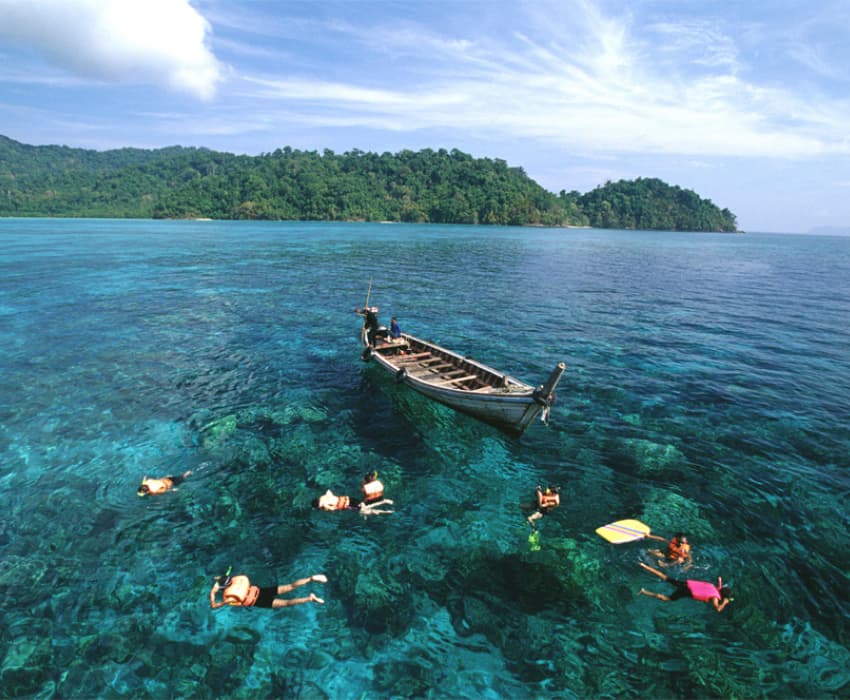
Wildlife and Nature Conservation
Phang Nga Bay is a haven for wildlife and a prime example of Thailand’s rich biodiversity. The bay’s unique ecosystems include lush mangroves, vibrant coral reefs, and diverse marine and bird life, all contributing to its status as a natural wonder.
The mangroves of Phang Nga Bay play a crucial role in maintaining the region’s ecological balance. These dense forests of salt-tolerant trees and shrubs provide a habitat for numerous fish species, crustaceans, and molluscs, serving as nurseries for many marine organisms. The intricate root systems of the mangroves also protect the coastline from erosion and help filter pollutants from the water, making them vital to the bay’s health.
Coral reefs are another integral part of Phang Nga Bay’s ecosystem. These underwater gardens are teeming with life, hosting a variety of colourful corals, fish, and other marine creatures. The reefs support a high level of biodiversity and are essential for the livelihoods of local fishing communities. They also act as natural barriers, protecting the coast from strong waves and storms.
Phang Nga Bay is a paradise for birdwatchers. The bay’s diverse habitats support many bird species, from majestic sea eagles to vibrant kingfishers. These birds add to the bay’s scenic beauty and play a role in the ecosystem by controlling insect populations and aiding in seed dispersal.
Marine life in Phang Nga Bay is abundant and diverse. Snorkelers and divers can encounter many species, including parrotfish, clownfish, sea turtles, and even the occasional reef shark. The bay’s clear waters and rich marine biodiversity make it a popular spot for underwater exploration.
Phang Nga Bay’s conservation efforts focus on preserving its unique ecosystems and the wildlife they support. Establishing the Ao Phang Nga National Park has significantly protected the bay’s natural resources. This national park status provides a legal framework for conserving the bay’s mangroves, coral reefs, and marine life, ensuring that these ecosystems are preserved for future generations.
Sustainable tourism practices are also being promoted to minimise visitors’ environmental impact. Initiatives include regulating the number of visitors to sensitive areas, promoting eco-friendly activities, and educating tourists about the importance of conservation. Resorts and tour operators in the region are increasingly adopting practices such as reducing plastic waste, conserving water, and supporting local conservation projects.
Cultural and Local Experiences
Phang Nga Bay offers more than natural beauty; it is also rich in cultural and local experiences, which can help you gain a deeper understanding of the region’s heritage and way of life. Exploring these aspects can make your visit more memorable and enriching.
Visiting local communities in Phang Nga Bay offers invaluable insights into the traditional lifestyles of sea gypsies and fishermen. Often living in stilted houses over the water, these communities have maintained their unique cultures and practices over generations. Their daily activities, such as fishing, boat-building, and market trading, provide a fascinating glimpse into their world. To interact respectfully with these communities, it is essential to approach them with curiosity and sensitivity. Always ask for permission before taking photographs, dress modestly, and be polite and patient. Engaging with local guides can enhance your understanding and ensure respectful and meaningful interactions.
Cultural day trips around Phang Nga Bay can immerse you in the region’s rich traditions and agricultural practices. Visiting rubber and pineapple plantations reveals the agricultural backbone of the local economy. You can learn about the rubber tapping process, which involves extracting latex from rubber trees, and witness the meticulous cultivation of pineapples. These visits showcase local farmers’ hard work and dedication and provide a unique hands-on experience.
Temple visits offer another layer of cultural immersion. The region has several temples, each with its history and architectural beauty. Exploring these sacred sites allows visitors to learn about local religious practices and the role of Buddhism in daily life. Respecting temple etiquette is crucial; always remove your shoes before entering, dress appropriately (covering shoulders and knees), and remain quiet and respectful.
Local crafts also play a significant role in the cultural fabric of Phang Nga Bay. Engaging with artisans who create traditional crafts such as batik painting, pottery, and weaving can be a rewarding experience. These crafts are often passed down through generations, and purchasing locally made items supports the community and preserves these important traditions.
Your Trip to Phang Nga Bay
-
Best Time to Visit
The ideal time to visit Phang Nga Bay is during the dry season, from November to April. The weather is typically sunny and pleasant during these months, with lower humidity and minimal rainfall. This period also coincides with the peak tourist season, so booking accommodations and tours well in advance is advisable. The wet season, from May to October, brings higher humidity and frequent rain showers, which can limit outdoor activities. However, this period offers a more tranquil experience with fewer tourists and lush green landscapes.
-
How to Get There
Phang Nga Bay is easily accessible from several major locations in southern Thailand. The most convenient starting point is Phuket, an international airport with frequent flights from major cities worldwide. From Phuket, you can take a short drive to one of the many piers offering boat trips to Phang Nga Bay. Krabi is another excellent option, with its airport and easy access to the bay via boat tours. For those starting from Phang Nga Town, numerous local operators provide boat tours directly into the bay, offering a more regional and less crowded experience. Private transfers and taxis are available from Phuket and Krabi, ensuring a comfortable and straightforward journey.
-
Accommodation
For a luxurious and unforgettable stay, Phang Nga Beach Resort, located on the pristine Natai Beach, Aleenta, offers spacious villas and suites with private pools, perfect for relaxing after a day of exploration. The resort provides excellent amenities, including fine dining, wellness treatments at the Ayurah Spa and Wellness Centre, and a range of activities for both adults and children.
Tips for Visitors
-
What to Pack
When planning a visit to Phang Nga Bay, it’s important to pack appropriately to ensure a comfortable and enjoyable trip. Essentials for a day trip include lightweight, breathable clothing, a hat, and sunglasses to protect against the sun. Don’t forget to bring a high SPF sunscreen, as the tropical sun can be pretty intense. A reusable water bottle is also crucial to stay hydrated throughout the day. For those planning to explore the water, pack a swimsuit, water shoes, and a quick-dry towel. A waterproof bag can be convenient to keep your belongings dry, especially during boat trips or kayaking adventures. Additional items such as insect repellent, comfortable walking shoes, and a light jacket for cooler evenings will be helpful if you’re staying overnight.
-
Safety Tips
Safety should always be a priority while exploring Phang Nga Bay. When engaging in water activities such as kayaking, snorkelling, or swimming, always wear a life vest and follow the guidance of local instructors or tour operators. Be mindful of the tide schedules, especially when exploring caves, to avoid being trapped by rising waters. It’s advisable to travel with a guide who is familiar with the area and can ensure a safe and informative experience. When hiking or walking through natural areas, stick to marked paths to avoid disturbing wildlife or getting lost. Finally, always carry a small first-aid kit for minor injuries or ailments.
-
Local Etiquette
Respecting local customs and etiquette is essential when visiting Phang Nga Bay. When visiting temples, dress modestly by covering your shoulders and knees, and always remove your shoes before entering. It’s essential to be respectful and quiet in these sacred places. When interacting with locals, a friendly attitude and a basic understanding of Thai greetings, such as “Sawadee” (hello) and “Khob Khun” (thank you), can go a long way in fostering goodwill. Avoid pointing with your feet or touching someone’s head; these actions are considered disrespectful in Thai culture. Always ask for permission before taking photographs of people or their property. Being mindful of these cultural nuances will ensure a respectful and enriching experience for you and the local communities.
FAQs
Q: What is the best time to visit Phang Nga Bay?
The best time to visit Phang Nga Bay is during the dry season, from November to April. During these months, the weather is pleasant, with minimal rainfall, making it ideal for outdoor activities such as kayaking, snorkelling, and boat tours.
Q: How do I get to Phang Nga Bay?
Phang Nga Bay is accessible from several locations. The most convenient starting points are Phuket and Krabi, which have international airports. You can take a short drive from these locations to one of the many piers offering boat tours to Phang Nga Bay. Private transfers and taxis are also available.
Q: What are the must-see attractions in Phang Nga Bay?
Some must-see attractions include James Bond Island (Khao Phing Kan), known for its iconic limestone karst; Koh Panyee, a unique floating village; and Hong Island, renowned for its hidden lagoons and rich biodiversity. Exploring these sites offers a blend of natural beauty and cultural experiences.
Q: Can I go kayaking in Phang Nga Bay?
Yes, kayaking is a popular activity in Phang Nga Bay. It allows you to explore hidden caves, lagoons, and the stunning limestone formations up close. Hong Island and Panak Island are among the top spots for kayaking adventures.
Q: Is snorkeling good in Phang Nga Bay?
Phang Nga Bay offers excellent snorkelling opportunities, especially around the Koh Khai Islands and the waters near Koh Yao Noi. These areas are known for their clear waters and vibrant coral reefs teeming with marine life, such as colourful fish, sea turtles, and other sea creatures.
Q: How much does it cost to explore Phang Nga Bay?
The cost of exploring Phang Nga Bay varies depending on the activities and tours chosen. Private longtail boats or kayaks can be rented for around 1,000 to 2,000 baht daily. Joining a group boat tour can cost around 1,500 to 2,500 baht per person. Some tours may include lunch or snorkelling gear, so checking with the tour operator before booking is best.
Q: Is it safe to swim in Phang Nga Bay?
Swimming in Phang Nga Bay is generally safe, but being aware of the currents and tides is essential. Some areas may have strong currents or rocky underwater terrain, so it’s best to stick to designated swimming areas or ask for advice from locals.
Q: Can I explore Phang Nga Bay alone?
Exploring Phang Nga Bay on your own is possible by renting a kayak or private longtail boat. However, it’s recommended that you have some experience with kayaking or boating and be aware of the tides and currents. Joining a guided tour can be a safer and more informative way to explore the bay.
Q: What should I pack for a trip to Phang Nga Bay?
When visiting Phang Nga Bay, pack lightweight and breathable clothing, a hat, sunglasses, and high-SPF sunscreen. Bring a swimsuit, water shoes, and a quick-dry towel for water activities. A reusable water bottle and a waterproof bag are also essential. If staying overnight, include insect repellent, comfortable walking shoes, and a light jacket for cooler evenings.
Q: Are there any safety tips for exploring Phang Nga Bay?
Safety is crucial while exploring Phang Nga Bay. Always wear a life vest during water activities and follow the guidance of local instructors or tour operators. Be aware of tide schedules when exploring caves to avoid getting trapped. Travelling with a guide is recommended for a safe experience. Additionally, carry a small first-aid kit for minor injuries.
How can I respect local customs while visiting Phang Nga Bay?
Respecting local customs is essential. Dress modestly when visiting temples, covering shoulders and knees, and remove shoes before entering. Be polite and use basic Thai greetings like “Sawadee” (hello) and “Khob Khun” (thank you). Avoid pointing with your feet or touching someone’s head, and always ask for permission before taking photos of people or their property.
Related Articles
- Visiting Phang Nga Town
- Phang Nga Natural Attractions
- Islands in Phang Nga Bay
- Beaches in Phang Nga
- Hidden Gems in Phang Nga
Aleenta Phuket
Phang Nga Resort & Spa
Phang Nga Resort & Spa
33 Moo 5, Khok Kloi,
Takua Thung, Phang Nga
82140 Thailand

